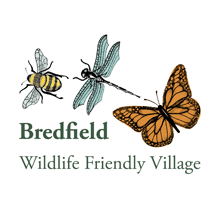An acid-green, wildlife-friendly plant
When I first moved to Bredfield, I was on the lookout for plants and flowers to put in the garden. With many other house-moving matters to think of, I wasn’t always very systematic about what I chose. Whilst driving though Boulge one day, a house there was selling plants outside. I bought a few, and amongst these was a Spurge. Today, many of those other plants have come and gone, but the Wood Spurge is still there and thriving. I’m not sure that everyone likes this plant, but I think it presents a wonderful acid-green display of flowers in Spring. The Royal Horticultural Society seem to share my opinion and has given the plant its Award of Garden Merit (AGM).
Spurge is definitely a wildlife-friendly plant. When I venture into the garden in Spring and Summer, it’s my go-to plant to see what insect life is about. Before we turn to look at these insects, bear with me for a couple of paragraphs whilst I delve into the complex subjects of the taxonomy and structure of Spurge.
Taxonomony
Spurge is the common name for the Eurhorbia genus of plants. There are around 2,000 species in the genus, including familiar plants like Poinsettia and Rubber Tree. Our native species of Wood Spurge is Eurorbia amygdoide and the subspecies robbiae – sometimes called Mrs Robb’s Bonnet – is one of the commoner cultivars. With 2,000 species, various subspecies and various cultivated versions, the taxonomy of Spurge gets mighty complicated.
Structure
Wood Spurge spreads by underground rhizomes, so you will often find plants growing close together in an expanding group. The green buds (the cyathia) that you see on the heads of the plant are a pair of modified leaves that contain four horseshoe-shaped glands, which produce nectar. The flowers themselves are the small two-lobed yellow, pollen-producing anthers in the centre of the horseshoes. The cyathia also produce female flowers, consisting of just a three-lobed stigma (the pollen receiving organ) leading down to an ovary. The female flower is produced before the male flowers and drops down out of the way when the male flowers arrive to avoid self-pollination. I hope you are following this! It does get more complicated, but let’s leave it there.
Insect magnet
What is important is that, though Spurge doesn’t look like most other flowers, it does produce nectar and pollen, and insects love it. My experience is that Spurge is particular attractive to bees, especially Mining Bees. However, they also attract butterflies, hoverflies, beetles and Ichneumon Wasps (which appear much more threatening than they actually are). Here is gallery of just some of the insects found on Spurge.
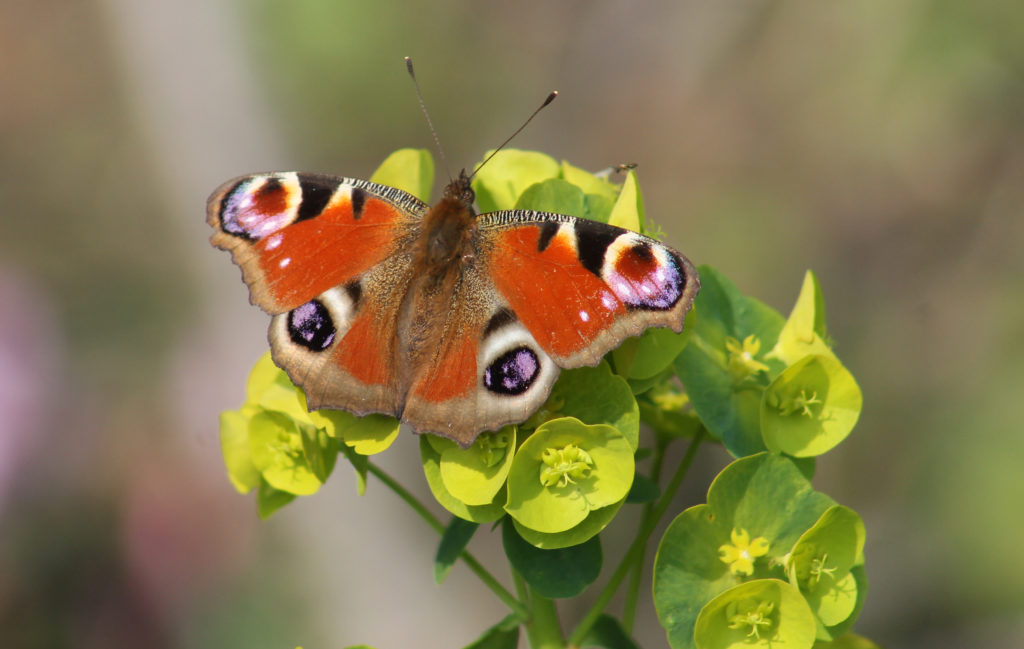
Peacock
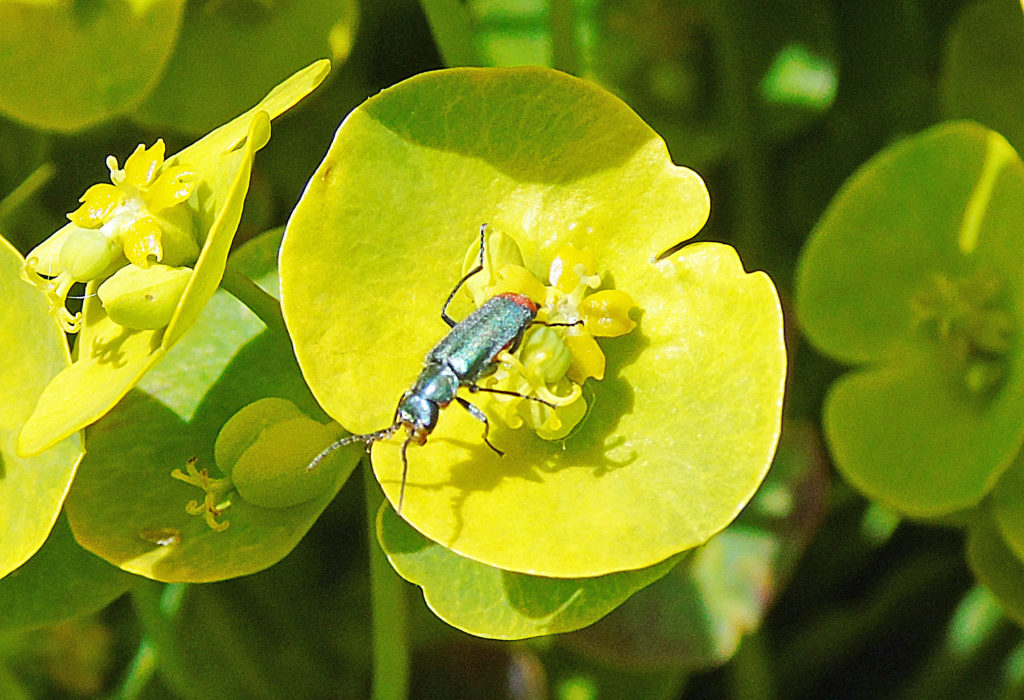
Common Malachite 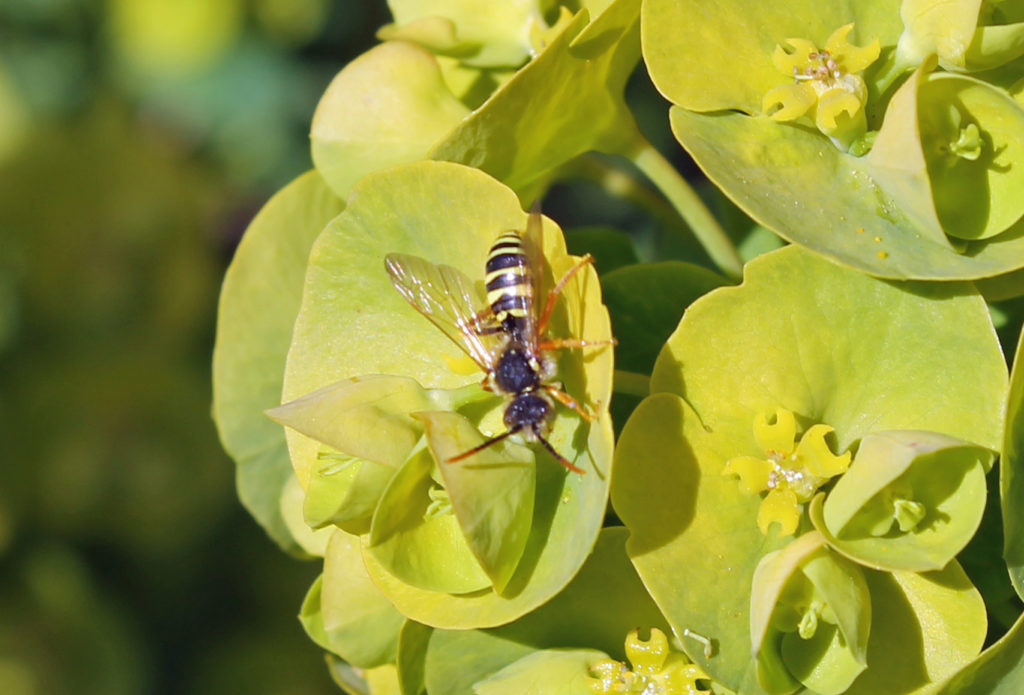
Gooden’s Mining Bee
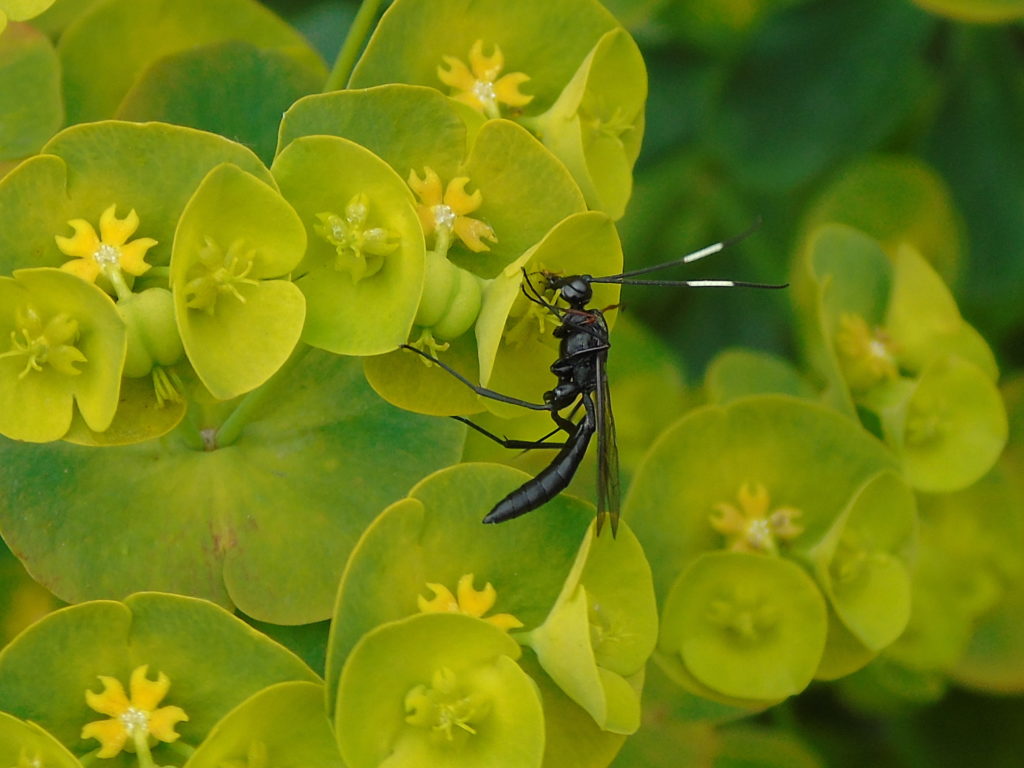
Ichneumon Wasp: Stenichneumon culpator 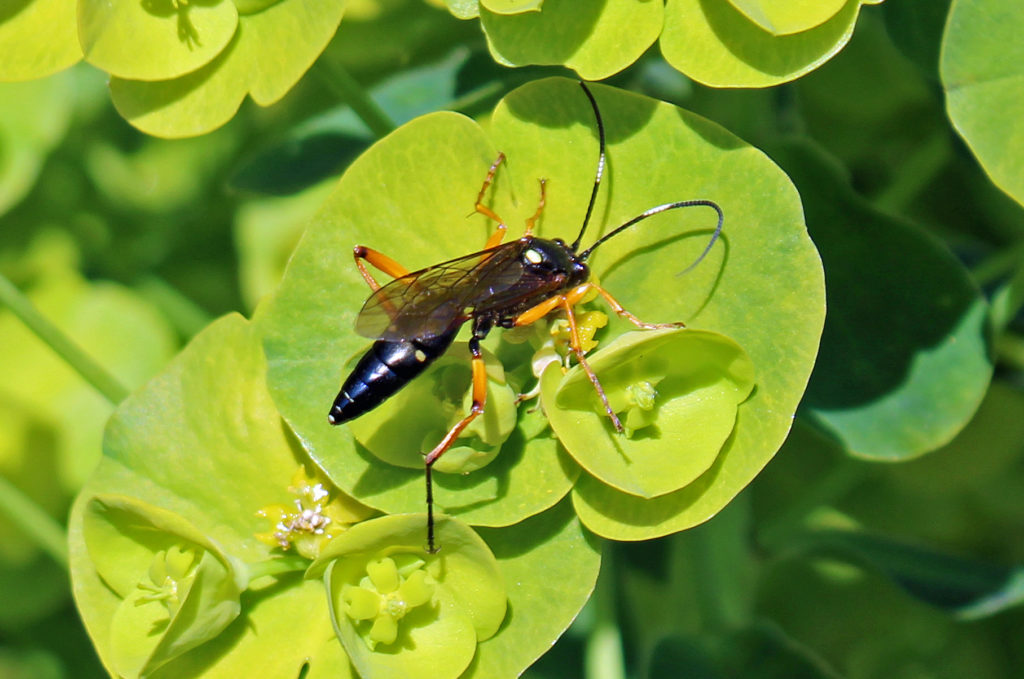
Ichneumon Wasp: Diphyus quadripunctorius
The downside
Spurge can spread, so you’ll need to contain it if necessary. The best time to divide plants is in March or April.
Care has to be taken when cutting or trimming Spurge. The milky white sap that oozes from the stem is a serious irritant. It can cause itching and, if it gets into the eyes, it is extremely unpleasant. Always wear gloves and clothing that protects your arms.
But sap aside, don’t be put off growing wood spurge in the garden; just handle it with care and enjoy the insect visitors.
